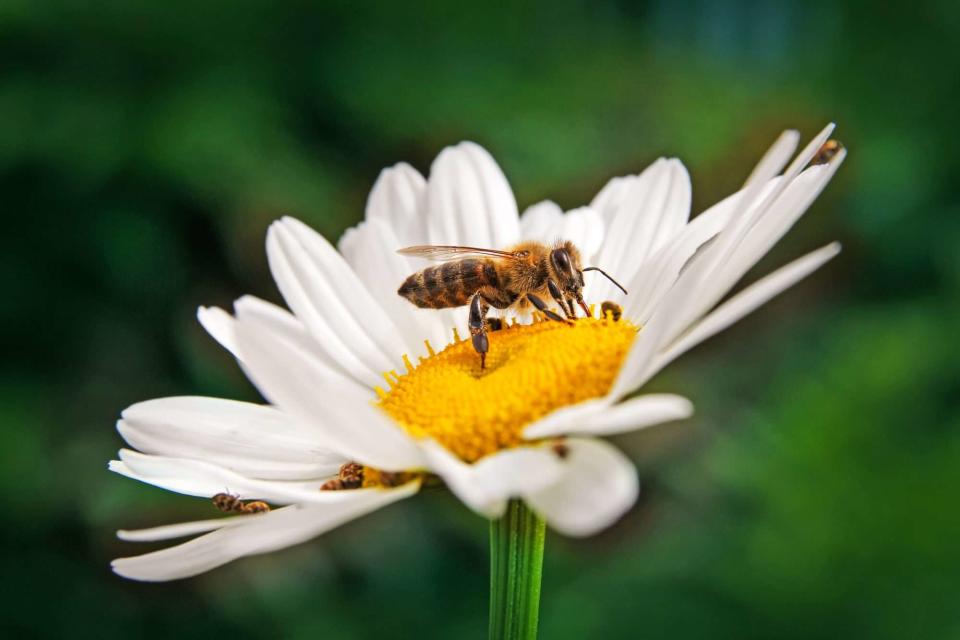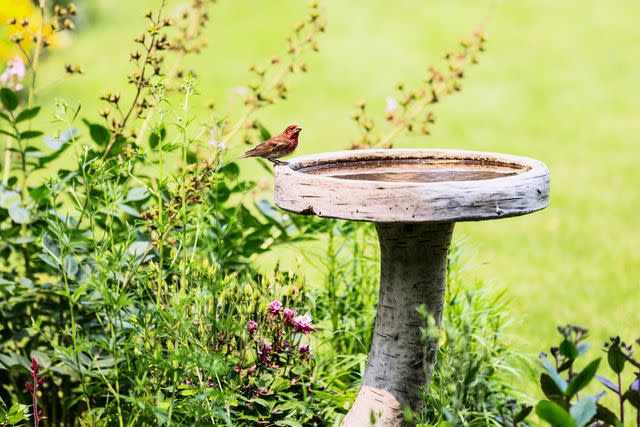How to Create a Thriving Pollinator Garden
Follow these expert-approved tips to attract bees, birds, butterflies, and more to your backyard.

Do you want to attract wildlife that will boost the health of your garden? Consider creating a pollinator garden filled with flowers that these critters love. As pollinators like bees and butterflies feast on these varieties, they pollinate them and encourage their growth—which ultimately helps your whole garden thrive.
While bees are some of the most commonly known pollinators, there are several others that also contribute to the health of your flowers and plants, says Megan Foster, a gardener and perennial and bulb category manager at American Meadows. "Season after season, butterflies, moths, hummingbirds, wasps, bumblebees, bats, and beetles are out there seeking food and host plants in our changing world," she says. "Good pollinators are ones in your region tirelessly foraging and helping to sustain our delicate ecosystem."
To make your yard a more welcoming place for these beneficial creatures, follow these essential tips, which will help you establish a busy, buzzing pollinator garden this season.
Related: How to Grow and Care for Bee Balm, the Pollinator Plant Your Garden Is Missing

Choose the Right Plants
The best way to attract pollinators to your garden is by growing a diverse variety of flowers, plants, and trees, says Kris Kiser, the president and CEO of the TurfMutt Foundation. Find out which plants to grow by checking out our guides to the varieties that draw birds (and other pollinators) and butterflies. You have plenty of options: Everything from oak trees to cardinal climbers can attract beneficial fauna.
Creating a successful pollinator garden goes beyond choosing the right flowers or shrubs—how you plant them also matters. Arranging flowers in bunches instead of individually makes them easier for pollinators to find. Also, be sure to do some research on the varieties that are particularly advantageous in your area. "Check your climate zone for landscaping options that support the birds, bees, butterflies, and other wildlife that call your neighborhood home," says Kiser.
Grow for Multiple Seasons
Make sure that you choose plants that bloom continuously throughout the year. "[This] will help create a bright and colorful garden and provide food and shelter to animals and insects year round," says Kiser. "Use the National Park Service's Ecoregional Pollinator Planting Guides to select plants that benefit pollinators in your microclimate." Planting nectar and pollen-rich flowers that grow year in your area year round will nourish pollinators beyond the typical growing season.

Create a Hydration Station
Like plants, pollinators need water, too—so be sure to build a fresh water source into your pollinator garden. A shallow dish of water filled with rocks or marbles allows critters to hydrate and perch at the same time, says Kiser. Alternatively, consider setting up a bird bath, adds Foster.
Fertilize the Pollinator Garden
Keeping your pollinator garden's soil nutrient-rich is critical for visitors that come by air or land. One way to do this is to retain grass clippings; instead of bagging them, let them decompose on your lawn, says Kiser. "It's a terrific natural fertilizer, and will provide shelter for insects, worms, and other backyard insects and animals," she says. Depending on the season, you can use fallen leaves instead of grass, but traditional compost works, too.
Avoid Chemicals
As you make your pollinator garden, avoid using harsh chemicals like systemic insecticides. "They do a lot more harm than users intend, killing or impacting reproduction for huge swaths of organisms we depend on," says Foster. These chemicals can be hard to remove once you start using them, since they get into plant tissue and soil, he explains.
Preserve the Pollinators' Habitat
As the seasons change, avoid cutting your lawn and plants—which provide nesting sites and shelter for overwintering pollinators—back too far, especially in the fall. "The buzz cut commonly seen on landscaping grasses and perennials [in the fall] eliminates overwintering habitat," says Foster. "Be sure to leave stalks in place as the days turn cooler so pollinators have a refuge during winter. The addition of man-made nesting blocks or old logs are also helpful."
Remain cautious even as warmer weather returns. Don't rake until it's about 60 degrees consistently come spring, as this will help you avoid killing off garden-friendly insects as they emerge from hibernation.

